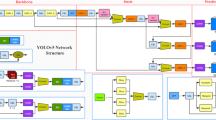Abstract
Nowadays, the dockless shared bicycle has a positive influence on people’s travel, thus it is useful to analyze the spatio-temporal features of shared bike. Due to the limitations of CNN or LSTM, the spatial correlation and time dependence is inferior to capture. In this paper, a combination of CNN and LSTM named CLTFP in deep learning model is applied to predict the travel distance and OD distribution of shared bicycles under different conditions of time and space. Experiments show that CLTFP has better performance to capture spatiotemporal correlations.









Similar content being viewed by others
References
Ai Y, Li ZP, Gan M, et al (2018) A deep learning approach on short-term spatiotemporal distribution forecasting of dockless bike-sharing system. Neural Comput Applic online
Bai Y, Sun Z, Zeng B, Deng J, Li C (2017) A multi-pattern deep fusion model for short-term bus passenger flow forecasting. Appl Soft Comput 58:669–680
Beroud B, Anaya E (2012) Chapter 11 private interventions in a public service: an analysis of public bicycle schemes. In: John Parkin (ed) Cycling and sustainability (Transport and sustainability). Emerald Group Publishing Limited, Bingley, pp 269–301
Castillo-Manzano JI, Sánchez-Braza A (2013) Managing a smart bicycle system when demand outstrips supply: the case of the university community in Seville. Transportation 40(2):459–477
Cervero R, Caldwell B, Cuellar J (2012) Bike-and-ride: build it and they will come. University of California Transportation Center Working Papers 16(4):83–105
Fishman E (2016) Bikeshare: a review of recent literature [J]. Transp Rev 36(1):92–113
Hinton GE, Salakhutdinov RR (2006) Reducing the dimensionality of data with neural networks. Science 313(5786):504–507
Hu J, Yang Z, Shu Y, Cheng P, Chen J (2017) Data-driven utilization-aware trip advisor for bike-sharing systems [C]. IEEE International Conference on Data Mining, p 167–176
Huang W, Song G, Hong H, Xie K (2014) Deep architecture for traffic flow prediction: deep belief networks with multitask learning. IEEE Trans Intell Transp Syst 15(5):2191–2201
Huang W, Song G, Hong H et al (2014) Deep architecture for traffic flow prediction: deep belief networks with multitask learning. IEEE Trans Intell Transp Syst 15:2191–2201
X Jin, C Xu, Feng, J Wei, et al (2015) Deep learning with s-shaped rectified linear activation units. arXiv preprint arXiv: 1512.07030
Ke JT, Zheng HY, Yang H et al (2017) Short-term forecasting of passenger demand under on-demand ride services: a Spatio-temporal deep learning approach. Transp Res C 85:591–608
Krizek KJ, Stonebraker EW (2011) Assessing options to enhance bicycle and transit integration. Transp Res Rec 2217(1):162–167
Ma X, Yu H, Wang Y et al (2015) Large-scale transportation network congestion evolution prediction using deep learning theory. PLoS One 10:e0119044
Ma X, Tao Z, Wang Y et al (2015) Short-term memory neural network for traffic speed prediction using remote microwave sensor data. Transp Res C 54:187–197
Ma Z, Xing J, Mesbah M, Ferreira L (2014) Predicting short-term bus passenger demand using a pattern hybrid approach. Transp Res C 39(39):148–163
Polson N, Sokolov V (2016) Deep learning predictors for traffic flows. arXiv, arXiv:1604.04527
Shaheen SA (2013) Introduction shared-use vehicle services for sustainable transportation: Carsharing, bikesharing, and personal vehicle sharing across the globe. Int J Sustain Transp 7(1):1–4
Y Shen, X Zhang, J Zhao (2018) Understanding the usage of dockless bike sharing in Singapore [J]. International Journal of Sustainable Transportation: 1–15
Tian ZP, Wang JQ, Wang J, Zhang HY (2018) A multi-phase QFD-based hybrid fuzzy MCDM approach for performance evaluation: a case of smart bike-sharing programs in Changsha [J]. J Clean Prod 171:1068–1083
Vincent P, Larochelle H, Bengio Y, et al (2008) Extracting and composing robust features with denoising autoencoders. In Proceedings of the 25th international conference on Machine learning. ACM, p 1096–1103
Wei Y, Chen MC (2012) Forecasting the short-term metro passenger flow with empirical mode decomposition and neural networks. Transp Res C 21(1):148–162
Yahya BN (2017) Overall bike effectiveness as a sustainability metric for bike sharing systems [J]. Sustainability 9(11):2070
Yang H, Yang H (2011) Equilibrium properties of taxi markets with search frictions. Transp Res B 45:696–713
Yang H, Leung CW, Wong SC, Bell MG (2010) Equilibria of bilateral taxi–customer searching and meeting on networks. Transp Res B 44:1067–1083
Author information
Authors and Affiliations
Corresponding author
Additional information
Publisher’s Note
Springer Nature remains neutral with regard to jurisdictional claims in published maps and institutional affiliations.
Rights and permissions
About this article
Cite this article
Li, Y., Shuai, B. Origin and destination forecasting on dockless shared bicycle in a hybrid deep-learning algorithms. Multimed Tools Appl 79, 5269–5280 (2020). https://doi.org/10.1007/s11042-018-6374-x
Received:
Revised:
Accepted:
Published:
Issue Date:
DOI: https://doi.org/10.1007/s11042-018-6374-x




